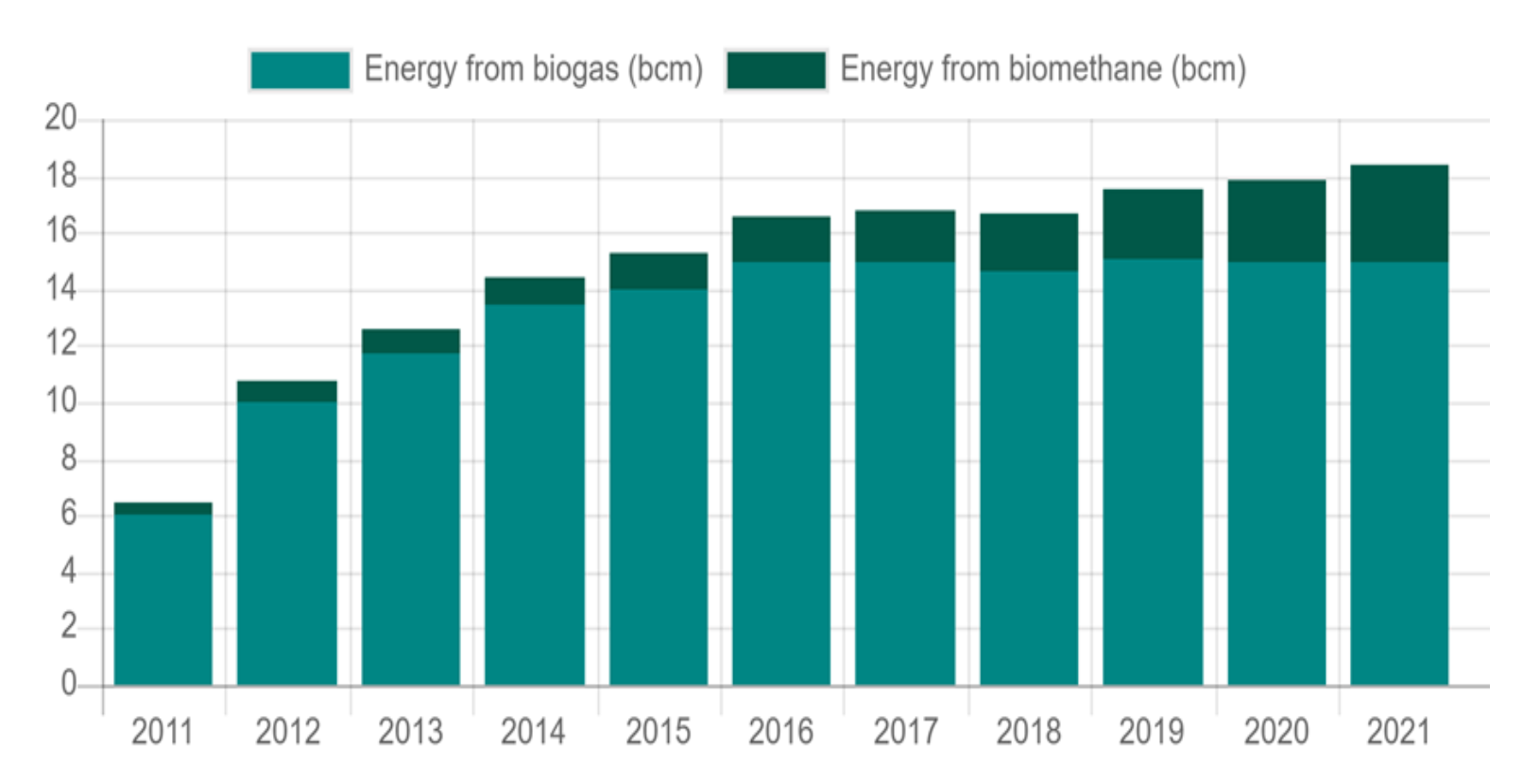INTRODUCTION
The global population is growing, which entails increase in the generation of municipal, industrial, and agricultural waste. This creates challenges in terms of waste disposal and also raises environmental concerns due to the release of greenhouse gases and other pollutants. Waste-to-Energy (WtE) technologies offer a promising solution by converting waste materials into valuable energy, thereby mitigating the adverse effects of traditional waste disposal methods.
WASTE TO ENERGY
There are several waste-to-energy solutions (eg.: Incineration, Pyrolysis, Gasification etc.), however biogas stands out from the different solutions for its renewable nature, versatility, and its ability to address both waste management and energy generation challenges in an environmentally friendly way.
Biogas is a renewable energy source produced from the anaerobic decomposition of organic matter. During the process the inherent energy stored in organic waste is harnessed to produce heat and electricity. Biogas is mainly composed of methane (CH4) (45 – 85 vol%) and carbon dioxide (CO2) (25 – 50 vol%). By purifying raw biogas, a high-caloric pure gas, biomethane can be obtained which can be used as a natural gas substitute. The use of biomethane to replace natural gas does not require additional investment regarding the infrastructure, because the existing gas infrastructure is biomethane-ready.

source: www.europeanbiogas.eu
Biogas and biomethane play a crucial role in reducing emissions throughout the entire value chain, offering a three-fold impact on emissions reduction. Firstly, they evade naturally occurring emissions by taking the organic residues to controlled biogas plants, preventing the emissions resulting from organic matter decomposition to be released into the atmosphere. Secondly, the production of biogas and biomethane drives out the use of fossil fuels as energy sources. Thirdly, the digestate generated in the biogas production process can be used as biofertilizer, which helps the reintroduction of organic carbon into the soil. At the same time the use of digestate reduces the need for carbon-intensive mineral fertilizer production.
BIOGAS PRODUCTION
Technical specifications define the methane content of certain biomass raw materials suitable for biogas production. These are:
- in agricultural-type facilities: 50-85%
- in wastewater treatment plants: 65-70%
- in municipal solid waste: 40-60%
The main components of biogases are methane and carbon dioxide, with no presence of higher hydrocarbons. The percentage of inert components (CO2, N2) due to their non-combustible nature, significantly affects combustion-related parameters such as lower / higher heating value.

In 2022 Europe’s combined biogas and biomethane production was 21 bcm, which was the equivalent of 6% of EU’s natural gas consumption. The number of power plants using biomethane also increased at the same rate in the past years, resulting in 1 323 power plants operating in Europe in 2022, which is at least 20% more than in 2021. Plants operating in the EU produced roughly more than 3.5 billion m3 of biomethane in 2021, while in 2022 that amount rose to 4.2 billion m3. According to the global forecast published in the International Energy Outlook, in 2023 the role of biomethane will be 12 times greater by 2030 and 30 times greater by 2050 compared to its role in 2022.

source: www.europeanbiogas.eu
TRENDS
Since 2000, biogas production worldwide has increased significantly. This trend can be observed in Europe as well. The recent geopolitical events caused extremely volatile gas (and other energy) prices. The European Union (EU) faces a significant challenge due to its overreliance on external energy supplies from Russia, endangering energy security and causing soaring energy costs across Europe. Committed to reducing dependence on Russian gas and simultaneously advancing climate change mitigation, the EU is accelerating the generation and adoption of renewable energy. By 2050, the current 21 bcm of combined biogas and biomethane production could increase to 167 bcm, covering 35-62% of EU’s gas demand in 2050.
The aim of the ‘Fit for 55’ package of legislations is to reduce dependence on Russian energy sources. In order to achieve this a specific policy package was put together under the REPowerEU regulation, adopted in 2023. The REPowerEU plan amended the energy-related legislative package. It includes the mandatory target value for the share of renewable energy sources in the EU’s energy structure to be increased to 45% by 2030, coordinated with the additional sub-goals of the REPowerEU regulation. The REPowerEU plan also includes increasing biomethane production to 35 billion cubic meters by 2030. The current production growth within the EU is strong, between 2018 and 2022 it has doubled, but it still falls short of the EU’s 2030 objectives, currently only a tenth of that.
USEFUL LINKS
biomethane country fiches: – https://energy.ec.europa.eu/publications/2023-biomethane-country-fiches_en
